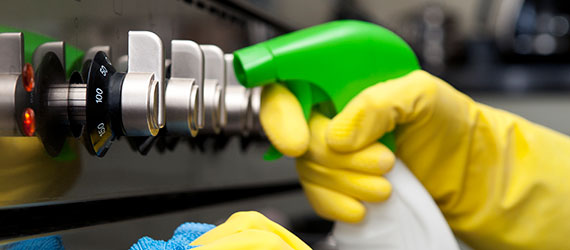EC Directive 93/43/EEC requires the proprietor of any food business to identify any steps of the activities of the food business which are critical to ensuring food safety, and to ensure that adequate safety procedures are identified, implemented and reviewed. This covers every activity from food production (post-harvest) and processing to storage, distribution and catering.

This requirement can be met by the use of hazard analysis systems, the most common being HACCP (Hazard Analysis and Critical Control Point).
Hazard analysis systems
A hazard is anything that could cause harm to the consumer. The three main hazards that may arise with food are its contamination by:
- Bacteria or other micro-organisms that cause food poisoning.
- Chemicals, for example by cleaning materials or pest baits.
- Foreign materials such as glass, metal, plastic etc.
Of these, the most important hazard in terms of risks and consequences is likely to be harmful bacteria or other microorganisms that may contaminate and/or grow in food.
On its way from farm to fork, food passes through many steps – delivery, storage, preparation, cooking, cooling and so on. Hazards can occur at any or all of these steps. Each business must identify, for each type of food, the hazards that may occur at each step in the process.
“Critical control points” are steps that are systematically identified at which the hazards must be controlled to ensure that the specific risks that might arise from the hazard are either eliminated or reduced to an acceptable level. Some of the cornerstones of the risk management system are, for example, that:
- Any cooking or re-heating step should be able to kill harmful micro-organisms. Cooking is normally the most important control step in most food preparation.
- Any step where food may become contaminated should be controlled.
Controls will include personal hygiene of staff as well as cleaning and/or disinfection of equipment to remove and/or kill harmful germs.
Cleaning
Even in the most highly automated food business, operating under the most controlled conditions, soiling of both surfaces and equipment is unavoidable. The type and extent of soiling will vary considerably, but, whatever the operations, it is essential that such residues are not allowed to accumulate to levels which expose food to the risk of contamination sufficient to present a hazard. Closely defined cleaning schedules and routines are designed, implemented and monitored to ensure soiling is adequately controlled.
Disinfection
Although cleaning may remove large numbers of micro-organisms, it does not usually kill them and therefore may not be sufficient on its own to reduce contamination at certain critical points to levels which are low enough to be safe. An unsatisfactory cleaning operation can itself be a major vehicle of contamination within food premises. In such cases, disinfection is required.
Normally disinfection is carried out after cleaning although in some cases the two processes are combined.
Disinfection does not need to be used for all surfaces and situations. It is only needed where the presence of micro-organisms at the levels that may otherwise be found would jeopardize the safety or quality of the food handled. If disinfection is considered necessary it will normally be restricted to:
Direct food contact surfaces, including:
- Chopping boards, preparation tables / work surfaces.
- Food processing machinery and plant such as slicers, mixers and mincers, knives, tongs and other utensils.
- Containers.
- Production belts.
Hand contact surfaces, including:
- Handles – doors, refrigerators, freezers, cupboards, and drawers.
- Taps.
- Switches.
- Food workers’ hands.
Contamination and bacterial multiplication hazards such as:
- Cloths and mops.
- Waste bins and their lids.
- Floors and walls, where unpackaged food is handled.
Cleaning Schedules
Good practice requires systematic cleaning schedules for all surfaces and equipment. There should be a separate cleaning schedule for every piece of equipment and every area of the premises.
A cleaning schedule should identify the:
- Task to be done, including where necessary the need to disinfect.
- Responsible person.
- Frequency of each operation
- Cleaning materials and products to be used.
- Method (including details of strip-down and re-assembly of the equipment).
- Safety precautions.
- End-result standard expected.
Organizations served by I&I suppliers of cleaning and hygiene products, tools and equipment frequently rely on the supplier’s expertise to design an integrated package of cleaning schedules, methods and products that will guarantee the necessary hygiene results for their specific circumstances. The service is complemented by on-site training.